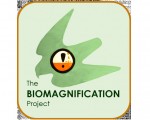Biomagnification: Birds of Prey exposing a chemical emergency?
Naomi Johns
- Region:
- South West
- Notice Period:
- Short (maybe less than one month's notice)
- Type:
- Professional
- Fee:
- Expensed: Travel expenses
- Category:
- Science
- Updated:
- 11th April 2023
- Tagged:
- Wildlife Conservation | Science And Nature | Birds Of Prey | Nature
Working closely with birds of prey in the way I am fortunate to do is an honour and a responsibility. Not just to the birds themselves, but the environment they depend on.
Chemical pollution is a ticking time bomb and has been for decades. The raptors that I have come to understand closely, might just hold some of the answers.
Biomagnification or biological magnification is the process of accumulation of certain chemicals in living organisms to a concentration higher than that occurring in the inorganic, non-living environment. Birds of prey, at the top of their respective food chains, are key species in this conversation.
Are birds of prey exposing a chemical emergency? Let me show you.
Views: 387 | Enquiries: 1About Naomi Johns
Striving for sustainability and making room for wildlife through connecting with birds of prey. Inspire a change.
I began working with birds of prey at 15 years old, which led to my career today, where I manage a multi-award winning bird of prey conservation centre and registered charity in the South West. Birds of prey sit at the peak of many of our native food chains, and resultingly are vital regulators for the biodiversity and health of our British ecosystems.
Both boots-on-the-ground conservation and education are essential when it comes to our collective mission for sustainability. From active rehabilitation, wild raptor monitoring or chemical research to understanding biodiversity and inspiring a change through the trusting relationships I form with our hawks.
Other Talks on SpeakerNet by Naomi Johns
Send a message to the speaker
If you are interested in this talk and wish to contact the speaker, please complete the following form:
